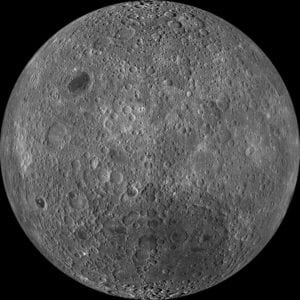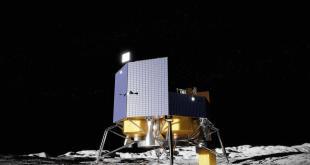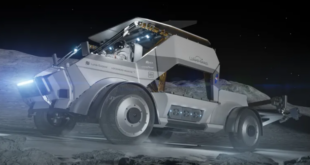
NASA has finalized the first 16 science experiments and technology demonstrations, ranging from chemistry to communications, to be delivered to the surface of the Moon under the Artemis program. Scheduled to fly next year, the payloads will launch aboard the first two lander deliveries of the agency’s Commercial Lunar Payload Services (CLPS) initiative. These deliveries will help pave the way for sending the first woman and the next man to the lunar surface by 2024.
In May 2019, the agency awarded two orders for scientific payload delivery to Astrobotic and Intuitive Machines, with both flights targeted to land on the Moon next year. Astrobotic, which will launch its Peregrine lander on a United Launch Alliance rocket, will carry 11 NASA payloads to the lunar surface, while Intuitive Machines, which will launch its Nova-C lander on a SpaceX Falcon 9 rocket, will carry five NASA payloads to the Moon.
“We’ve finished the work of assigning science and technology payloads to each of the initial CLPS deliveries,” said Chris Culbert, CLPS project manager at NASA’s Johnson Space Center in Houston. “This step allows our commercial partners to complete the important technical integration work necessary to fly the payloads and brings us a step closer to launching and landing the investigations that will help us better understand the Moon ahead of sending the first woman and next man to the Moon.”
Each partner is responsible for payload integration and operations, launching from Earth and landing on the Moon, as well as securing any additional customers on their flights, if desired. The payloads are each about the size of a shoebox and range in mass from around two to 33 pounds (one to 15 kilograms).
Both Partners
Two of the payloads will be integrated onto both the Astrobotic lander and the Intuitive Machines lander. This gives NASA multiple opportunities to gather important data and demonstrate a critical technology needed for future human exploration.
Laser Retro-Reflector Array (LRA): LRA is a collection of eight approximately half inch (1.25 centimeter) retro-reflectors – a unique kind of mirror that is used for measuring distance – mounted to the lander. This mirror reflects laser light from other orbiting and landing spacecraft to precisely determine the lander’s position. It is being provided by NASA’s Goddard Space Flight Center in Greenbelt, Maryland.
Navigation Doppler Lidar for Precise Velocity and Range Sensing (NDL): The NDL is a LIDAR-based (LIght Detection And Ranging) sensor composed of a three-beam optical head and a box with electronics and photonics that will provide extremely precise velocity and range sensing during descent and landing of the lander that will tightly control navigation precision for a soft and controlled touchdown on the Moon. NDL is being collaboratively developed by NASA’s Johnson Space Center in Houston and Langley Research Center in Hampton, Virginia.
Astrobotic Payloads
Surface Exosphere Alterations by Landers (SEAL): SEAL will investigate the chemical response of lunar regolith to the thermal, physical and chemical disturbances generated during a landing, and evaluate contaminants injected into the regolith by the landing itself. It will give scientists insight into the how a spacecraft landing might affect the composition of samples collected nearby. It is being developed at NASA Goddard.
Photovoltaic Investigation on Lunar Surface (PILS): PILS is a technology demonstration that is based on an International Space Station test platform for validating solar cells that convert light to electricity. It will demonstrate advanced photovoltaic high-voltage use for lunar surface solar arrays useful for longer mission durations. It is being developed at Glenn Research Center in Cleveland.
Linear Energy Transfer Spectrometer (LETS): The LETS radiation sensor will collect information about the lunar radiation environment and relies on flight-proven hardware that flew in space on the Orion spacecraft’s inaugural uncrewed flight in 2014. It is being developed at NASA Johnson.
Near-Infrared Volatile Spectrometer System (NIRVSS): NIRVSS will measure surface and subsurface hydration, carbon dioxide and methane – all resources that could potentially be mined from the Moon – while also mapping surface temperature and changes at the landing site. It is being developed at Ames Research Center in Silicon Valley, California.
Mass Spectrometer Observing Lunar Operations (MSolo): MSolo will identify low-molecular weight volatiles. It can be installed to either measure the lunar exosphere or the spacecraft outgassing and contamination. Data gathered from MSolo will help determine the composition and concentration of potentially accessible resources. It is being developed at Kennedy Space Center in Florida.
PROSPECT Ion-Trap Mass Spectrometer (PITMS) for Lunar Surface Volatiles: PITMS will characterize the lunar exosphere after descent and landing and throughout the lunar day to understand the release and movement of volatiles. It was previously developed for ESA’s (European Space Agency) Rosetta mission and is being modified for this mission by NASA Goddard and ESA.
Neutron Spectrometer System (NSS): NSS will search for indications of water-ice near the lunar surface by measuring how much hydrogen-bearing materials are at the landing site as well as determine the overall bulk composition of the regolith there. NSS is being developed at NASA Ames.
Neutron Measurements at the Lunar Surface (NMLS): NMLS will use a neutron spectrometer to determine the amount of neutron radiation at the Moon’s surface, and also observe and detect the presence of water or other rare elements. The data will help inform scientists’ understanding of the radiation environment on the Moon. It’s based on an instrument that currently operates on the space station and is being developed at Marshall Space Flight Center in Huntsville, Alabama.
Fluxgate Magnetometer (MAG): MAG will characterize certain magnetic fields to improve understanding of energy and particle pathways at the lunar surface. NASA Goddard is the lead development center for the MAG payload.
Intuitive Machines Payloads
Lunar Node 1 Navigation Demonstrator (LN-1): LN-1 is a CubeSat-sized experiment that will demonstrate autonomous navigation to support future surface and orbital operations. It has flown on the space station and is being developed at NASA Marshall.
Stereo Cameras for Lunar Plume-Surface Studies (SCALPSS): SCALPSS will capture video and still image data of the lander’s plume as the plume starts to impact the lunar surface until after engine shut off, which is critical for future lunar and Mars vehicle designs. It is being developed at NASA Langley, and also leverages camera technology used on the Mars 2020 rover.
Low-frequency Radio Observations for the Near Side Lunar Surface (ROLSES): ROLSES will use a low-frequency radio receiver system to determine photoelectron sheath density and scale height. These measurements will aide future exploration missions by demonstrating if there will be an effect on the antenna response or larger lunar radio observatories with antennas on the lunar surface. In addition, the ROLSES measurements will confirm how well a lunar surface-based radio observatory could observe and image solar radio bursts. It is being developed at NASA Goddard.
NASA has 14 companies on contract through CLPS to bid on delivering science experiments and technology demonstrations to the lunar surface. Investigations and demonstrations launched on commercial Moon flights will help the agency study Earth’s nearest neighbor, and prepare for human lunar missions beginning in 2024 under the Artemis program.
NASA anticipates advancements in landers and rovers will be needed to expand the range and duration of its science and technology experiments. Through CLPS, the agency plans to work with its partners to send about two deliveries of scientific and research payloads to the Moon per year starting in 2021.
 SpaceWatch.Global An independent perspective on space
SpaceWatch.Global An independent perspective on space




